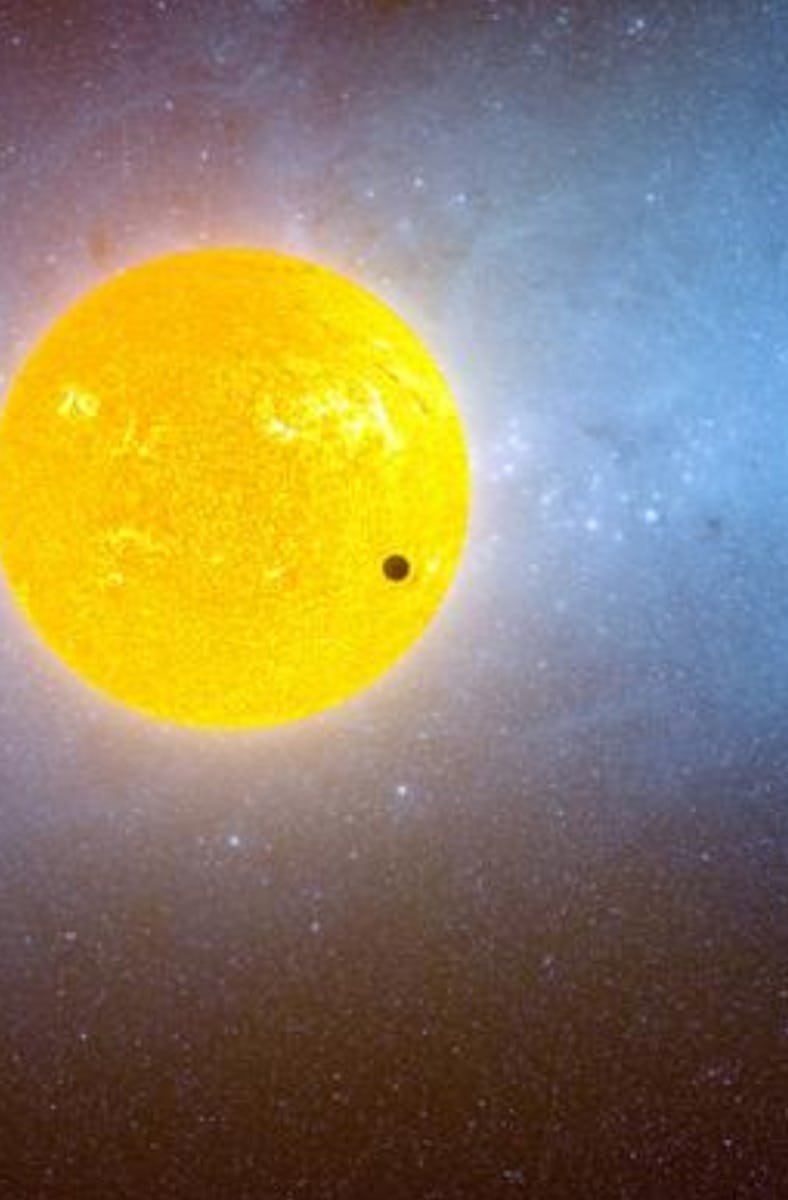This Hellish Version of Earth Has Lava Oceans
Surf's up — if you dare.

If Earth had an evil twin, it might look something like the recently-discovered lava-Earth HD 63433d.
HD 63433d is a rocky world almost exactly the same size as our Earth, orbiting a star almost exactly like our Sun. But HD 63433d orbits so daringly close to its star that instead of watery oceans, it is enveloped by seas of lava. Still, this nightmarish landscape might have things to teach us about how our planet became habitable – and what our chances are of finding atmospheres on other rocky worlds around Sun-like stars.
This illustration shows another lava world, Kepler-10b, silhouetted against its host star.
Welcome to Lava-Earth
Imagine what Earth would be like if it orbited the Sun at just a tiny fraction of Mercury’s distance. That’s HD 63433d. This planet zips around its star once every 4.2 days, compared to Mercury, which takes 88 days to orbit the Sun at a more prudent distance. University of Florida astronomer Ben Capistrant and his colleagues spotted the planet passing across the bright face of its star in data from the ESA’s Gaia and NASA’s TESS space telescopes.
“At that distance, we expect it to be tidally locked, like the Moon is locked to us with one side always facing Earth,” explains Capistrant in a recent statement following publication of the finding in The Astronomical Journal. “That means the heating is uneven, and we estimated that the daytime temperature is consistent with molten rock.” If Capistrant and his colleagues’ calculations are right, the perpetually star-scorched dayside of HD 63433d is 2300 degrees Fahrenheit (1260 C), which makes it similar to other lava worlds like CoRoT-7b and Kepler-10b.
But the burning question about this lava-Earth is whether it has an atmosphere.
“Planets the size of HD 63433d almost always have predominantly rocky compositions and no thick atmospheres,” write Capistrant and his colleagues in their recent paper, but then again, those (mostly) airless rocky planets are almost always much older than HD 63433d, which is the youngest world of its type astronomers have ever spotted: a tender 500 million years old. That means the lava-Earth may still be in the process of losing its original atmosphere: a thick envelope of mostly hydrogen and helium that surrounds most newly-formed planets. Powerful radiation from the host star usually strips away that early atmosphere from planets orbiting close to their stars, or without strong magnetic fields to shield them.
Sometimes, planets can produce a replacement atmosphere. All it takes is volcanoes pumping out huge amounts of water vapor, carbon dioxide, sulfur dioxide, and other volatile gases that got trapped inside the planet when it formed. Whether or not the planet gets to hold onto that secondary atmosphere depends on the strength of the star’s winds and the planet’s magnetic field. The outcome of that gassy tug-of-war could determine whether the planet ends up being habitable.
HD 63433d is just 71 light years away, close enough that astronomers using telescopes like Gaia or Hubble should be able to take a closer look at it to see whether it has an atmosphere – and if so, what it’s made of. Astronomers may even be able to watch the planet losing its original atmosphere in real-time. The process could reveal more details about how our (currently) much less hellish planet, and others like it elsewhere in the galaxy, evolved.